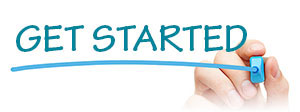Have you grown tired, or at least have concerns about repeating the same convention attendance year after year? It’s not surprising if you have some concerns. Manufacturers are often pushed by various societies, large meeting hosts or even customers to attend national and regional meetings. You certainly want brand exposure for sure and you don’t want to risk being forgotten, but convention attendance is a tough marketing expense. If your sales cycle is not particularly fast, you often find it very difficult to track the ROI from a big meeting. If you have a slow sales cycle, you can’t directly measure the ROI but still feel trapped into attending. It’s more of a defensive investment rather than the revenue generator it’s intended to be. You first pull salespeople away from territory production, which is disruptive. Then you pay for the meeting, shipping logistics, flights, hotels, client entertainment and food. As the numbers add up quickly, especially if there are multiple meetings in year, you wonder what else you could have invested in with a greater ROI. You are not alone!
If your organization views national meetings as a reward for top performers or your business can draw a clear line between costs and revenue generation, you may be one of the lucky ones. If not, there are some steps you can take to elevate your convention attendance impact, while limiting your downside expenses. The most important step is to make certain your organization is selling at the most productive meetings by considering attendance numbers and core target customers who are expected to attend, while ignoring the less impactful meetings. You may really want to question how things have been done in the past, especially if it has become a legacy expense and playbook that is never updated, and changes are never even up for discussion. Your sales force is often the group with the most expertise and depth of knowledge about your product but are they really needed at a convention or medical congress for 4 days? Is your product difficult to demonstrate or is it a service or product that can easily be represented by a talented convention specialist? Perhaps a fresh new look at what you’re spending and what you’re expecting may help you improve ROI and set a new paradigm in motion.
The most important way to ensure that your meeting investments are successful is to create a clear expectation of outcomes to be achieved. Sometimes this will be easier and more effective with convention professionals that are measured for their performance, one meeting at a time. They may be more willing to create conversation, prospect for new contacts, engage in meeting social functions or even hunt down key targets. They don’t view their attendance at the meeting as a favor to the company or a boondoggle reward. They can be specifically trained to utilize new messaging with customers or ask specific questions that may inform better marketing decisions. They will feed the customer responses right back without filtering based on their own past experiences or bias toward product or service changes. They are not bound by history and are open minded to change and new possibilities. These professional convention representatives are hired because they have a background of experience that makes them an appropriate fit for the convention anyway. They may have been a former competitor, or a professional in the discipline (like a nurse representing a medical product or an engineer representing a technical product). Caswood has been building convention teams with industry experts since 1997 and has the expertise to help you plan out your future meeting attendance. Some specialized products may require sending very highly trained, expert-level representatives to meetings because of the knowledge needed to engage customers, but often and for many types of businesses, outsourcing this function to a highly motivated group is the more effective strategy.
The Caswood Group specializes in outsourced commercial solutions for many types of sales organizations in pharmaceutical/healthcare, technology, and consumer products, for the last 27 years.


